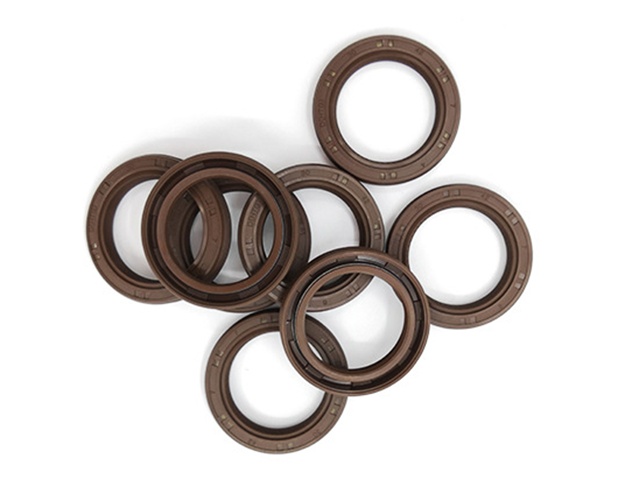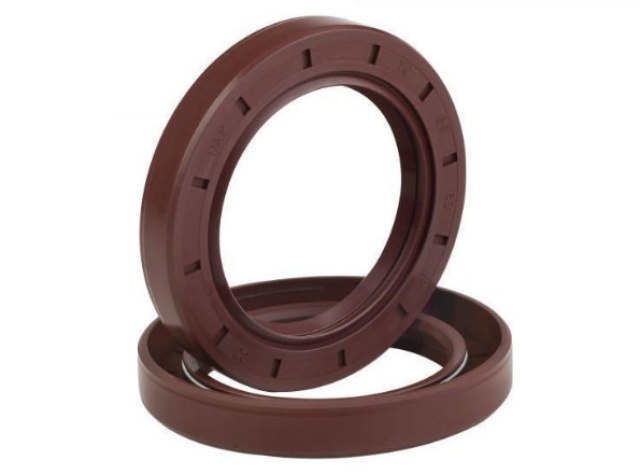Oil seals play a vital role in preventing fluid and lubricant leakage in machinery. They are used to seal the gap between two components, usually a rotating shaft and a stationary housing. Its china oil seal design is critical to its effectiveness, especially in China, where the oil seal industry is highly competitive and rapidly developing.
In China, the oil seal industry has gained significant momentum and witnessed rapid development in recent years. The country’s commitment to technological advancements, manufacturing capabilities, and competitive pricing has propelled it to the forefront of the global market. Chinese manufacturers have consistently focused on improving the design and functionality of oil seals to meet the demanding requirements of modern machinery.
The effectiveness of an oil seal heavily relies on its design. The seal’s geometry, dimensions, and material selection are crucial factors that influence its performance and longevity. China’s oil seal industry has invested substantial resources in research and development to enhance seal designs and optimize their functionality. This includes the exploration of innovative sealing profiles, improved lip designs, and advanced materials to withstand varying operating conditions and environmental factors.
Chinese manufacturers have also been proactive in adopting and developing new materials to enhance the performance of oil seals. They utilize a wide range of elastomers, including nitrile rubber (NBR), fluoroelastomers (FKM), silicone rubber, and polytetrafluoroethylene (PTFE), among others. Each material possesses specific properties such as temperature resistance, chemical compatibility, and durability, enabling oil seals to withstand diverse operating conditions.
Key design considerations for oil seals in China
Operating conditions
In China, the first and most important design consideration for oil seals is the working conditions. Operating conditions may vary from application to application, so selecting a seal that can withstand specific conditions is critical. The three most critical operating conditions are temperature, pressure and medium.
- Temperature: The temperature range of the application is an important consideration when selecting an oil seal. If the temperature exceeds the upper limit of the seal, it will cause the sealing material to degrade, reducing its effectiveness. On the contrary, if the temperature is lower than the lower limit, the seal will become brittle and lose its function.
- Pressure: The pressure exerted on the seal is another critical factor in oil seal design. High pressure applications require seals that can withstand pressure without leaking, while low pressure applications can use less robust seals.
- Media: The type of fluid or gas the seal will be in contact with is another important consideration. Different materials are used for different media to provide the best performance. For example, oil seals used in automotive applications may need to withstand exposure to gasoline and other types of petroleum-based products.

Shaft and housing material
The selection of materials used for the shaft and housing is another important consideration in the design of oil seals in our country. The materials used must be compatible with the sealing material to ensure proper function. Additionally, the surface finish of the shaft and housing must be smooth to reduce friction and prevent damage to the seals.
Sealing lip design
The sealing lip is the part of the oil seal that comes into contact with the shaft and is responsible for preventing leakage. Lip material, geometry and spring design are all key considerations in Chinese oil seal design.
- Lip Material: The material used for the lip must be compatible with the fluid or gas to which the seal will be exposed. The commonly used oil seal lip materials in China include nitrile rubber, fluorine rubber, silicone rubber, etc.
- Lip Geometry: The shape of the lip can vary depending on the application. Some common lip geometries used in China include radial, axial, and asymmetric.
- Spring Design: The spring used in the oil seal design helps maintain contact between the seal lip and the shaft. Different types of springs are available, including single and multi-turn, garter springs, and wave springs.
Seal Dimensions and Installation
The size and method of installation of the oil seal are also key design considerations. Seals must be the correct size to fit the shaft and housing, and must be installed correctly for proper operation.
- Shaft and Housing Diameters: Shaft and housing diameters must be accurately measured to select the correct size oil seal. If the diameter measurement is incorrect, the seal will not fit properly, resulting in leaks and premature wear.
- Seal Thickness: The thickness of the oil seal must also be considered. If the seal is too thin, it can be easily damaged, while a seal that is too thick can cause excessive friction, leading to premature wear.
- Installation method: The installation method is also important for proper function of the oil seal. Seals must be installed correctly to prevent damage to the seal and to ensure a tight fit.
Materials for oil seal manufacturing in China
The materials used in the manufacture of oil seals in China vary by application. Elastomeric materials are often used for sealing lips, while reinforcements such as fabric or metal can be used for strength and durability.
- Elastomer material: The most commonly used elastomer materials for domestic oil seal lips are nitrile rubber, fluororubber, silicone rubber, etc. Each material has unique properties that make it suitable for different applications.
- Reinforcement: Reinforcement materials, such as fabric or metal, can be used in oil seal manufacturing to provide additional strength and durability. Textile reinforcement helps improve seal strength and reduces pinch risk, while metal reinforcement helps increase abrasion resistance.
- Other Materials: Other materials used in China oil seal manufacturer include lubricants and fillers. Lubricants help reduce friction and extend seal life, while fillers are used to increase the strength and durability of the seal.
Common failure modes of oil seals in my country
Although they play a key role in preventing fluid and lubricant leaks, oil seals can fail due to a number of factors. Common failure forms of oil seals in my country include wear, leakage, extrusion, hardening, and cracking.
- Wear: Wear occurs when the seal lip contacts the shaft or housing, causing the seal material to wear down over time. If wear is not addressed, it can lead to leaks and premature seal failure.
- Leakage: Leakage is one of the most common failure modes of oil seals in our country. It can occur due to a number of factors, including improper installation, excessive shaft or housing runout, or a damaged sealing lip.
- Extrusion: Extrusion occurs when seal material is forced into the gap between the shaft and housing, causing the seal to fail. This can happen when the pressure exceeds the seal’s maximum rating or when the seal is installed incorrectly.
- Hardening and Cracking: Hardening and cracking can occur when sealing materials are exposed to high temperatures or harsh chemicals, causing the material to degrade over time. This can lead to premature seal failure and leakage.
Prevention and Mitigation of Oil Seal Failure in my country
In China, the prevention and mitigation of oil seal failure involves a combination of proper installation, material selection, design optimization, and maintenance and inspection.
Proper Installation: Proper installation is critical to prevent oil seal failure. Seals must be installed correctly to ensure a tight fit and prevent damage to the sealing lip.
Material Selection: Material selection is another key factor in preventing oil seal failure. The material must be selected based on the operating conditions and the fluid or gas to which the seal will be exposed.
Design optimization: Design optimization helps to improve the performance and life of Chinese oil seals. This can include optimizing lip geometry, choosing the right spring design, and improving the surface finish of the shaft and housing.
Maintenance and Inspections: Regular maintenance and inspections help identify potential problems before they become major problems. This may include checking for worn, leaking or pinched seals and replacing them if necessary.
In conclusion
In conclusion, it is crucial for china oil seal design to consider its effectiveness and longevity. Operating conditions, shaft and housing materials, seal lip design, seal size and installation, and materials used in manufacture all play a critical role in the performance of an oil seal. Proper installation, material selection, design optimization, and maintenance and inspection are all essential to prevent oil seal failure and ensure the proper operation of machinery. The china high pressure oil seal industry is highly competitive and rapidly evolving, and it is essential to stay abreast of the latest developments in the field to ensure optimum performance and reliability.
Related Products













